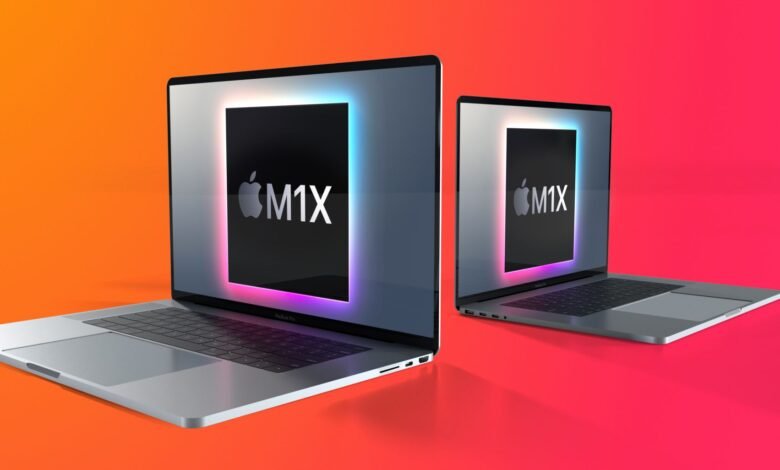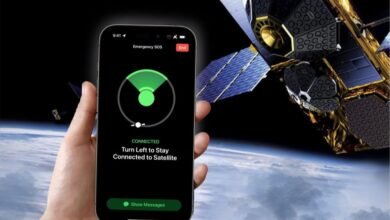
If you’ve been putting off buying a new MacBook Pro due to FOMO or hesitation, Apple may have the answers you’re looking for soon. The invitation theme for Apple’s next event, set for Monday, Oct. 18, is “unleashed,” implying that we’ll finally learn about the company’s high-performance systems.
As we approach the deadline, rumors suggest that not only is a 14-inch MacBook Pro model on the way, but that it, along with a new 16-inch model, will feature new, high-pixel-density Mini-LED-based screens, a new higher-powered version of Apple’s M1 processor similar to the 12.9-inch iPad Pro, the return of much-missed connectors, and the removal of the not-so-loved Touch Bar.
Following Apple’s huge event in mid-September, where the company unveiled the iPhone 13, Apple Watch 7, iPad Mini 6, and an improved entry-level iPad, the firm is set to make more announcements.
Read more: 8 Best MacBook Pro alternatives for 2021
When will the new MacBook Pros be announced?
The company is almost certain to release new MacBook Pros and potentially other new Macs next week, on October 18. This corresponds to Mark Gurman’s claim in a recent Power On newsletter that new MacBook Pro models will arrive this month. He had earlier predicted that the new models will be released before the end of this year.
A more powerful Apple M1X (or M2) CPU?
This is quite self-evident. Apple’s M1 processor has made its way into the MacBook Air, 13-inch MacBook Pro, 24-inch iMac, Mac Mini, and iPads, but we haven’t seen any of the company’s homegrown silicon in systems for power users yet. Multiple sources agree that a new version of the CPU will be released for the larger MacBook (now with a 16-inch screen) and maybe for impending new desktops, and that it is already in production.
There are also reports that there will be two variants of the new chip, each having ten cores (eight high-performance and two energy-efficient), but with various integrated graphics core configurations: 16 or 32. The M1, on the other hand, features eight cores that are split evenly between performance and power efficiency, as well as seven or eight graphics cores. Doubling or quadrupling the amount of cores promises dramatically improved performance, which, when combined with MacOS’ tight integration, might rival that of a discrete AMD GPU. It’s also uncertain whether a separate GPU will be available.
It makes logical to have two types (with rumors of future versions with even more core possibilities for the Mac Mini and Mac Pro): In my tests, the M1 chip performed nearly evenly across all devices, providing the iPad the same processing power as the Mac Mini. That doesn’t make sense for high-end equipment customers, when choosing a less powerful processor can save you thousands of dollars or where a discrete GPU is required.
The two types could explain why predictions for the next CPU’s name, M1X or M2, haven’t swayed decisively in one direction or the other.
In terms of Intel products, we’ve been hearing predictions that there wouldn’t be Intel versions of the MacBook Pros since January, and there haven’t been any signals to the contrary to date.
When will we be able to buy them?
You won’t be able to get one right after they’re revealed due to chip shortages. Earlier this month there were reports that the shortages would at least delay shipments until the end of October or early November. And those delays are independent of production bottlenecks for Mini-LED-based panels, which could mean only a limited volume of laptops are available in 2021.
A new size, but at a higher starting price?
We might be in for a 14-inch replacement for the 13-inch MacBook Pro, which might mean a 14-inch screen that fits into a chassis around the same size as the 13 — thanks to lower screen bezels. That’s in line with a trend we’ve seen with Windows laptops, as well as Apple’s strategy when switching from 15-inch to 16-inch MacBook Pro models. If the 14-inch uses a new panel technology, as suggested by the resolution rumor below, a price increase would be justified.
Most industry observers believe the 14-inch model will cost more than the 13-inch, starting at the higher end of the latter’s pricing range. I wouldn’t be surprising, given the higher cost of screen technology and present shortages. It begs the question of whether Apple will continue to offer the M1-based MacBook Pro 13 as a less expensive option.
A whizzy new Mini-LED screen?
Another given, and a very welcome one, is a Mini-LED backlight-based display, which would allow MacBook Pros to better support HDR at higher brightness and with better local dimming, which is critical for video editing and producing content for the 12.9-inch iPad Pro and its Mini-LED screen. It’s likely to be accompanied by a software upgrade that allows the MacBook Pro to play HDR content in 4K.
Recently, Ross Young, CEO of Display Supply Chain Consultants (who correctly described the iPad Mini months before it was announced), tweeted that Apple would employ LG Display and Sharp screens — “MiniLEDs, 100 percent verified.”
Panel suppliers are the same between the iPad Pro’s and MacBook Pro’s – LG Display and Sharp. Expecting similar technology – oxide backplanes, miniLED backlights and 120Hz refresh rates. MiniLEDs, 100% confirmed.
— Ross Young (@DSCCRoss) October 12, 2021
Apple’s Pro Display XDR uses two technologies: an oxide backplane and a Mini LED backlight (although not at 120Hz refresh rate), which bodes well for black levels.
In a late beta of MacOS Monterey, MacRumors noticed a mention to new screen resolutions: “3,456×2,234 Retina” and “3,024×1,964 Retina.” The first would have a pixel density of 226 ppi, which is nearly identical to the present 16-inch MacBook display. Apple prefers to stick to a specific range for its Retina displays, but the latter differs just little from the present 3,072×1,920; this is a strong indication that Apple will release a new panel. Alternatively, on the 16-inch and 14-inch devices, both resolutions would give the same 257 ppi.
A new aesthetic?
Rumors abound in this town. From the iPad to the iMac, almost every gadget Apple has released this year has followed the flat-edged profile style that dates back to the iPhone 4. Given the MacBook Pro’s clamshell shape, it’s unclear whether Apple will implement this. Suggestions that the MacBooks would arrive in vibrant hues like the iMac 24 haven’t gotten much momentum.












One Comment